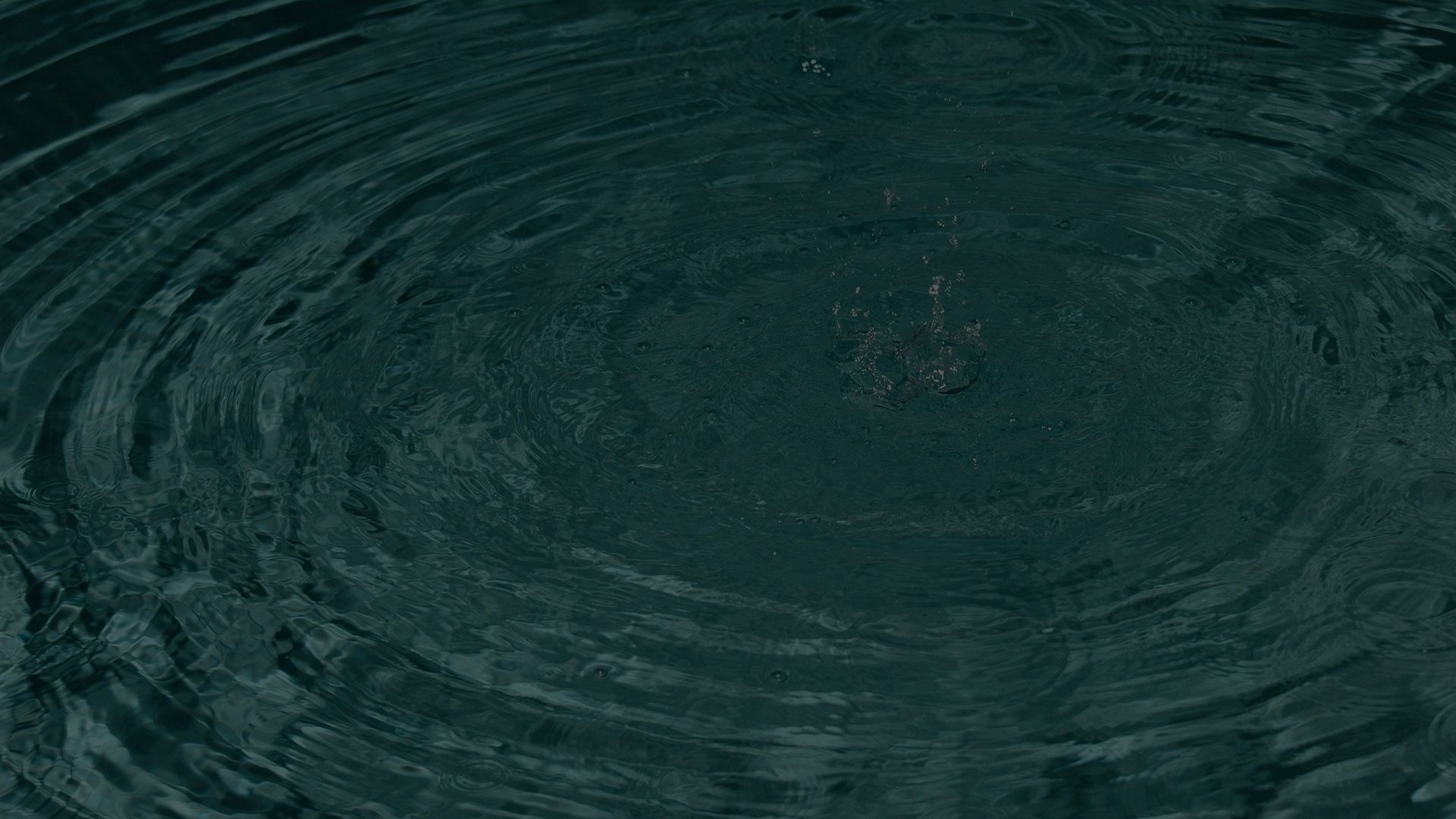Aquatic Therapy for ACL Rehabilitation: A Comprehensive Guide
ACL injuries are among the most common knee injuries, significantly impacting an individual’s mobility and overall quality of life. These injuries often occur during sports activities that involve sudden changes in direction, landing from jumps, or direct collisions. The long road to recovery can be time-consuming and exhausting, but aquatic therapy is an effective rehabilitation method for those recovering from ACL injuries. By leveraging the unique properties of water, this approach offers a gentle yet effective way to strengthen the knee while minimizing strain.
This comprehensive guide from HydroWorx aims to inform fitness professionals and rehabilitation centers about the advantages of aquatic therapy for ACL rehabilitation, outlining its techniques and benefits to enhance patient outcomes.
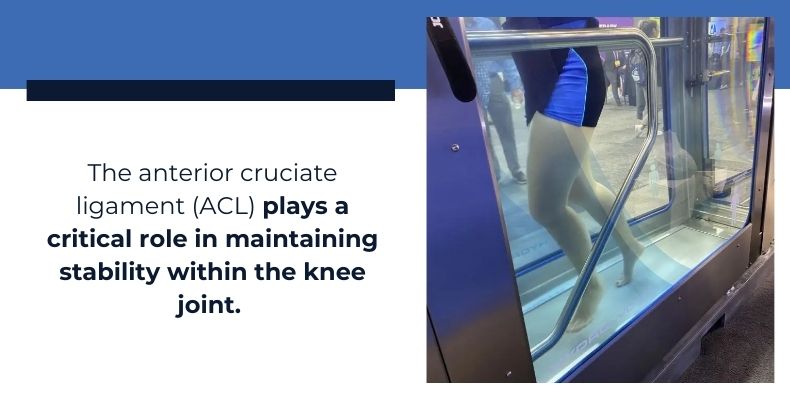
Understanding ACL Injuries
The anterior cruciate ligament (ACL) plays a critical role in maintaining stability within the knee joint. This ligament connects the thigh bone to the shin bone, facilitating proper movement during activities like running, jumping, and pivoting. ACL injuries typically occur in two forms: partial tears and complete tears, often resulting from sudden stops or changes in direction. Symptoms can include intense pain, swelling, and a feeling of instability in the knee.
Timely and effective rehabilitation is crucial for restoring function and preventing long-term complications. A well-structured rehabilitation plan not only promotes healing but also prepares individuals for a safe return to their active lifestyles, allowing them to regain strength, mobility, and confidence in their movements.
Benefits of Aquatic Therapy for ACL Rehabilitation
Aquatic therapy offers numerous benefits for individuals recovering from ACL injuries, primarily due to the low-impact nature of exercising in water. The buoyancy of water reduces the stress placed on the injured knee, allowing for safe and effective movements that would be difficult or painful on land. This unique environment provides a gentle resistance that helps enhance strength without compromising joint stability.
Moreover, hydrostatic pressure from the water aids in reducing pain and swelling, promoting faster recovery. As individuals engage in aquatic therapy, they often experience improved range of motion and flexibility, essential for restoring normal function in the knee. Additionally, the controlled setting enables personalized instruction and supervision, fostering confidence in patients as they progress through their rehabilitation journey. Ultimately, aquatic therapy aids in physical recovery and helps individuals regain emotional resilience, facilitating a smoother transition back to their active lifestyles.
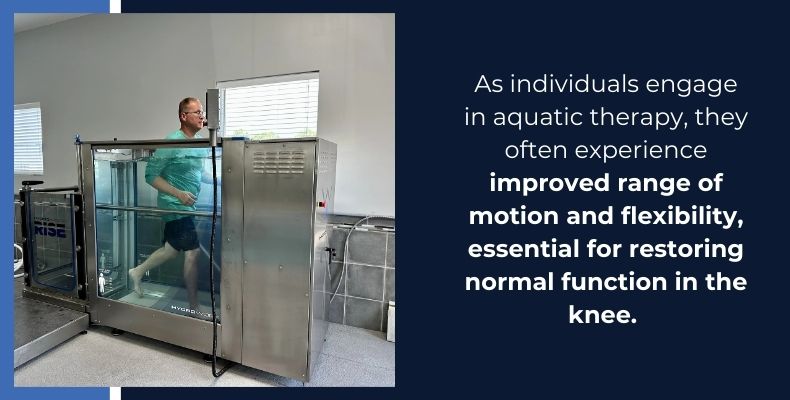
Components of an Effective Aquatic Therapy Program
An effective aquatic therapy program for ACL rehabilitation begins with a thorough initial assessment to establish individual needs and treatment goals. This ensures a tailored approach, considering factors such as age, injury severity, and physical fitness level. The rehabilitation process is typically divided into three key phases: acute, subacute, and functional.
During the acute phase, the focus is on reducing pain and swelling while gradually introducing gentle movements. In the subacute phase, patients begin to engage in more dynamic exercises aimed at improving strength and flexibility. Finally, the functional phase emphasizes regaining the ability to perform everyday activities and sports-specific movements.
Incorporating a variety of aquatic exercises targeting specific muscle groups and motions is critical for overall rehabilitation success. Regular reassessments throughout the program also ensure progress is being monitored and adjustments are made as necessary, guiding patients toward optimal recovery outcomes.
Recommended Aquatic Exercises for ACL Rehabilitation
A variety of aquatic exercises can effectively aid ACL rehabilitation by targeting key muscle groups and enhancing overall knee stability.
- Underwater treadmill walking or running allows patients to simulate land-based activities while benefiting from the cushioning effect of water.
- Resistance exercises using water jets further promote muscle strengthening, as patients can adjust the intensity based on their comfort levels.
- Incorporating balance and proprioceptive training in shallow water helps improve coordination and stability, crucial for safe movement patterns.
- Stretching and range-of-motion exercises, specifically designed for the knee and surrounding muscles, are essential for maintaining flexibility and preventing stiffness.
These exercises can be modified to suit each patient’s progress, ensuring a comprehensive and adaptable rehabilitation program. Collectively, these activities not only help restore function in the knee but also build confidence, allowing individuals to transition effectively back into their daily routines and physical activities.
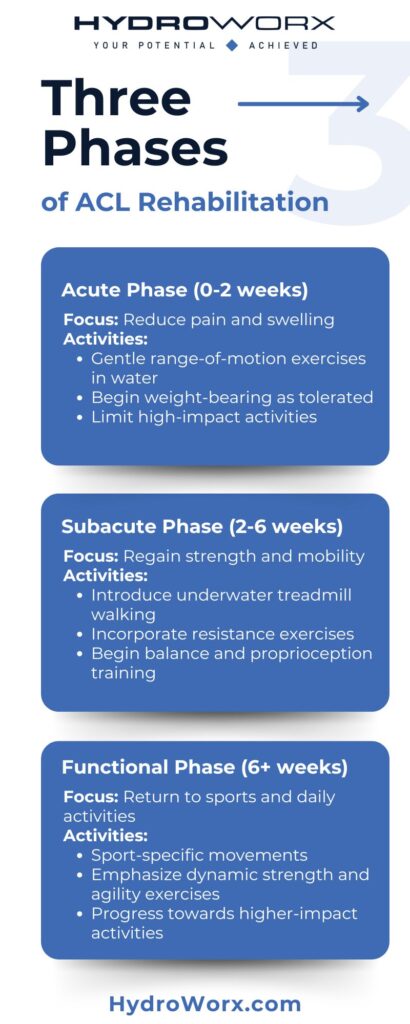
Monitoring Progress and Adjusting the Program
Monitoring progress in aquatic therapy for ACL rehabilitation is essential for ensuring optimal recovery and successful outcomes. Regular assessments allow therapists to track improvements in range of motion, strength, and overall mobility. This continuous feedback enables the therapeutic team to adapt the program based on each patient’s specific needs and responses to treatment. Adjusting the therapy regimen may involve modifying exercise intensity, introducing new aquatic activities, or transitioning to more advanced movements as the patient progresses.
Incorporating patient feedback is also crucial; their experiences can provide insights into pain levels and comfort, guiding further adjustments. By carefully monitoring progress and remaining flexible in the therapeutic approach, rehabilitation specialists can create a more personalized experience, fostering a supportive environment that encourages patient motivation and engagement. Ultimately, this proactive approach enhances the likelihood of a successful recovery and allows individuals to safely return to their active lifestyles.
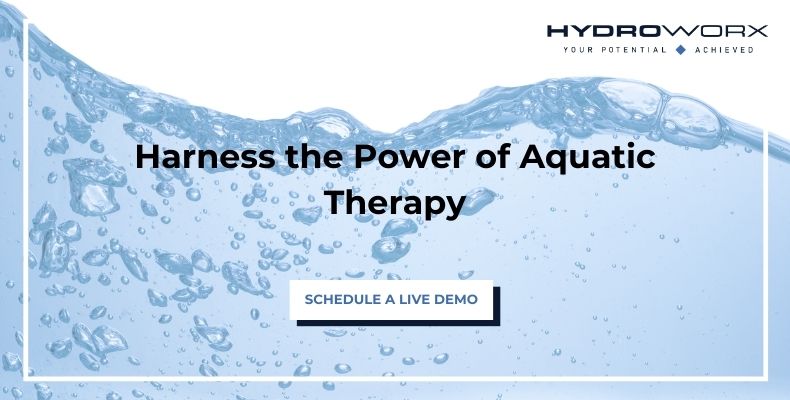
Learn More From HydroWorx
Aquatic therapy presents a compelling option for ACL rehabilitation, combining the benefits of low-impact exercise with the therapeutic properties of water. This approach not only aids in physical healing but also helps patients regain confidence and improve their quality of life.
To further enrich your ACL rehabilitation programs, consider exploring HydroWorx solutions and resources, which provide advanced therapy pools and innovative equipment tailored to optimize patient care. Together, let’s harness the power of aquatic therapy to help individuals overcome ACL injuries and achieve their personal fitness goals.

